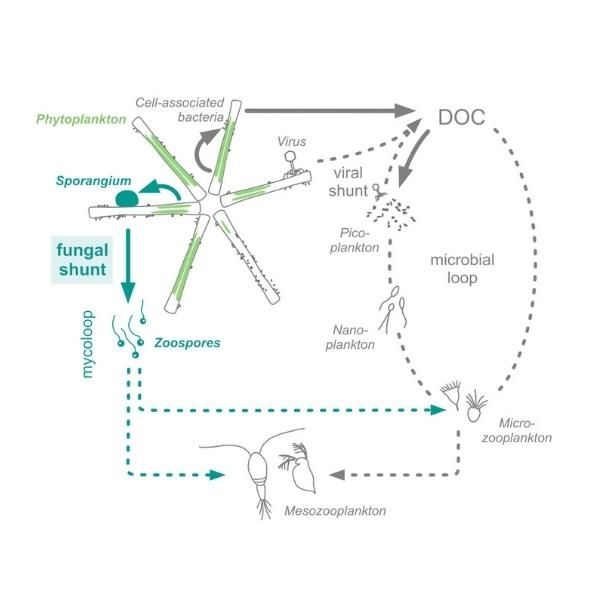Tiny algae in Earth’s oceans and lakes take in sunlight and carbon dioxide and turn them into sugars that sustain the rest of the aquatic food web, gobbling up about as much carbon as all the world’s trees and plants combined.
New research shows a crucial piece has been missing from the conventional explanation for what happens between this first “fixing” of CO2 into phytoplankton and its eventual release to the atmosphere or descent to depths where it no longer contributes to global warming. The missing piece? Fungus.
“Basically, carbon moves up the food chain in aquatic environments differently than we commonly think it does,” said Anne Dekas, an assistant professor of Earth system science at Stanford University. Dekas is the senior author of a paper published June 1 in Proceedings of the National Academy of Sciences that quantifies how much carbon goes into parasitic fungi that attack microalgae.
Read more at: Stanford University
Fungus creates an underappreciated express lane for carbon, "shunting" as much as 20 percent of the carbon fixed by diatoms out of the microbial loop and into the fungal parasite. (Photo Credit: Klawonn et al. 2021, PNAS)


